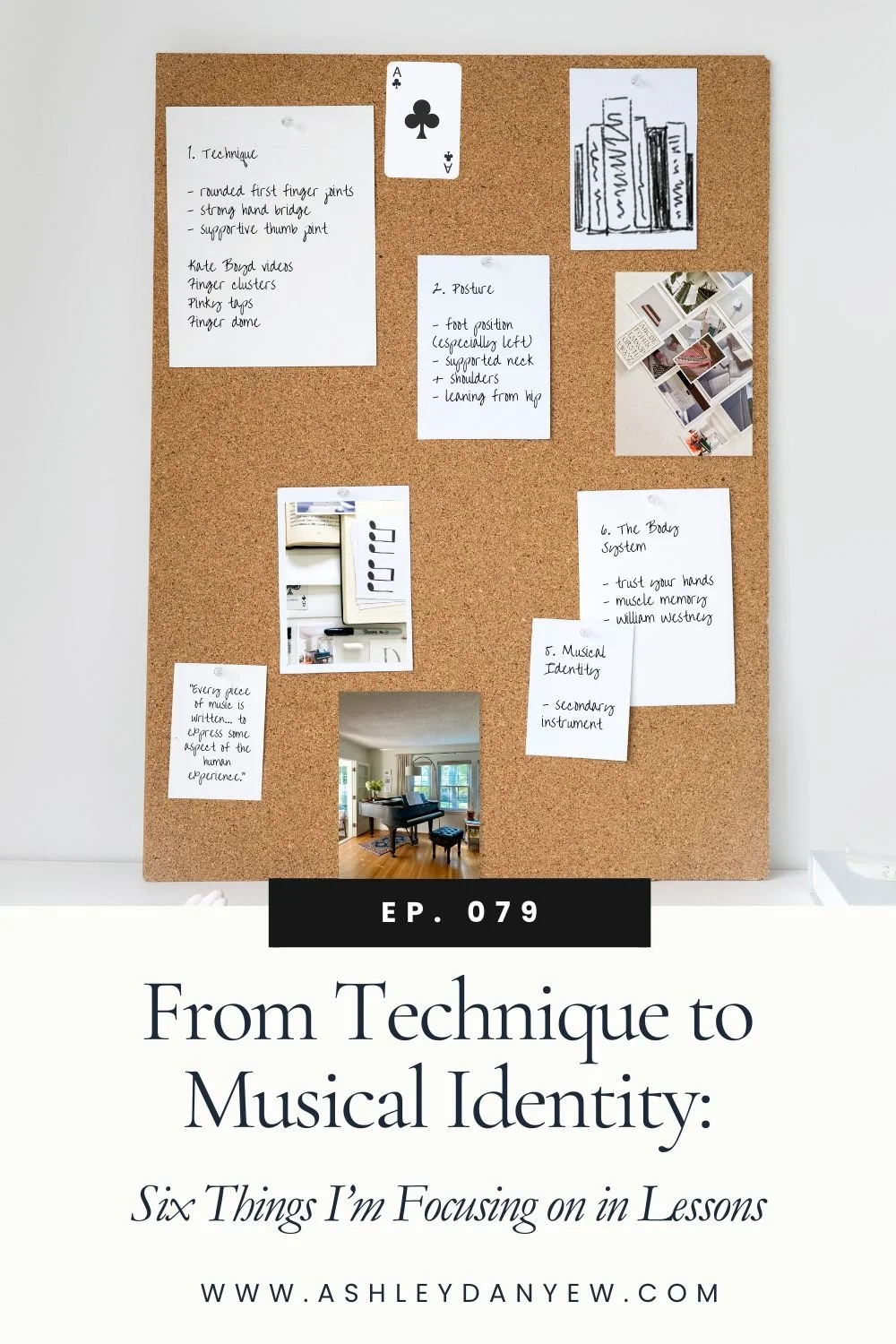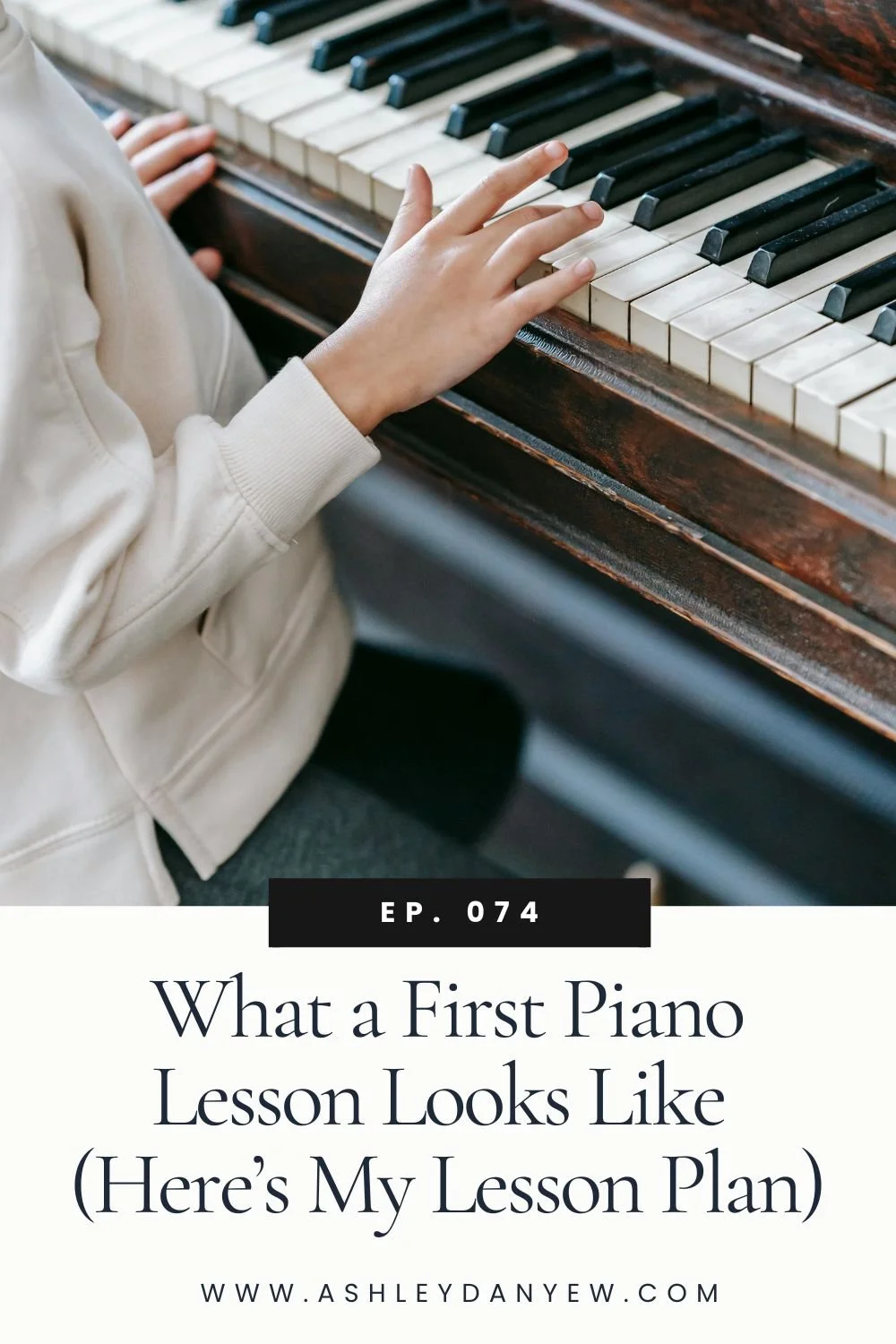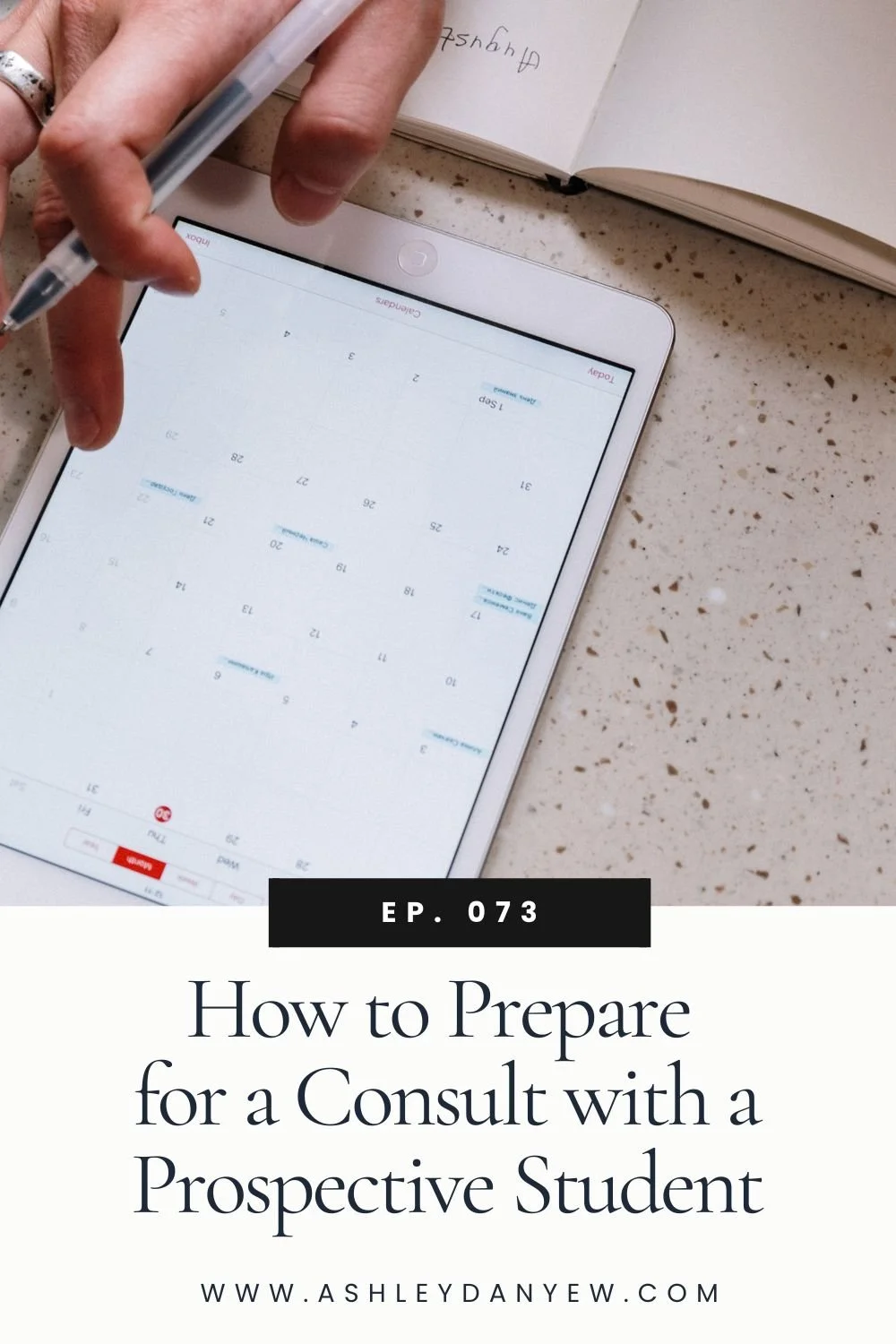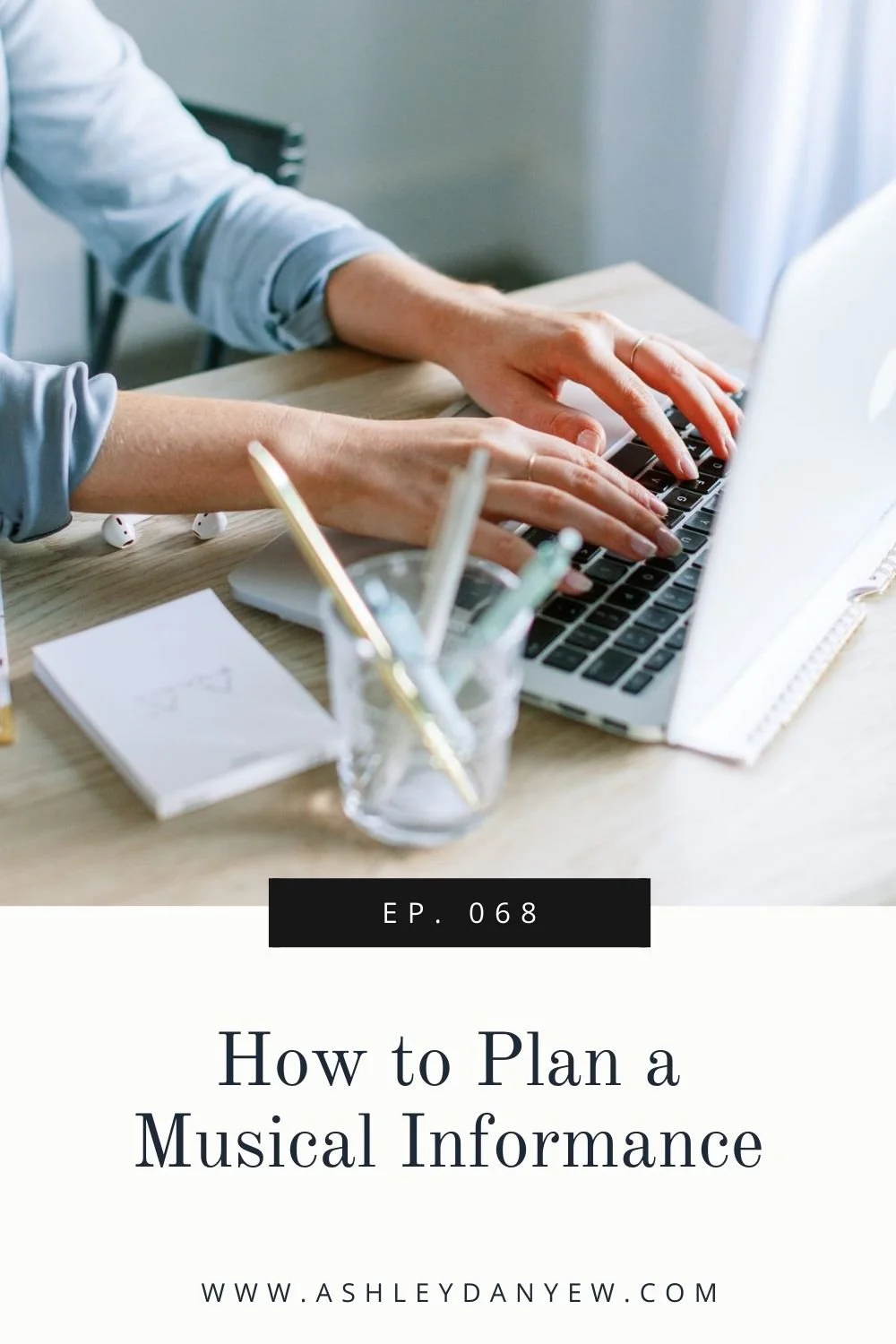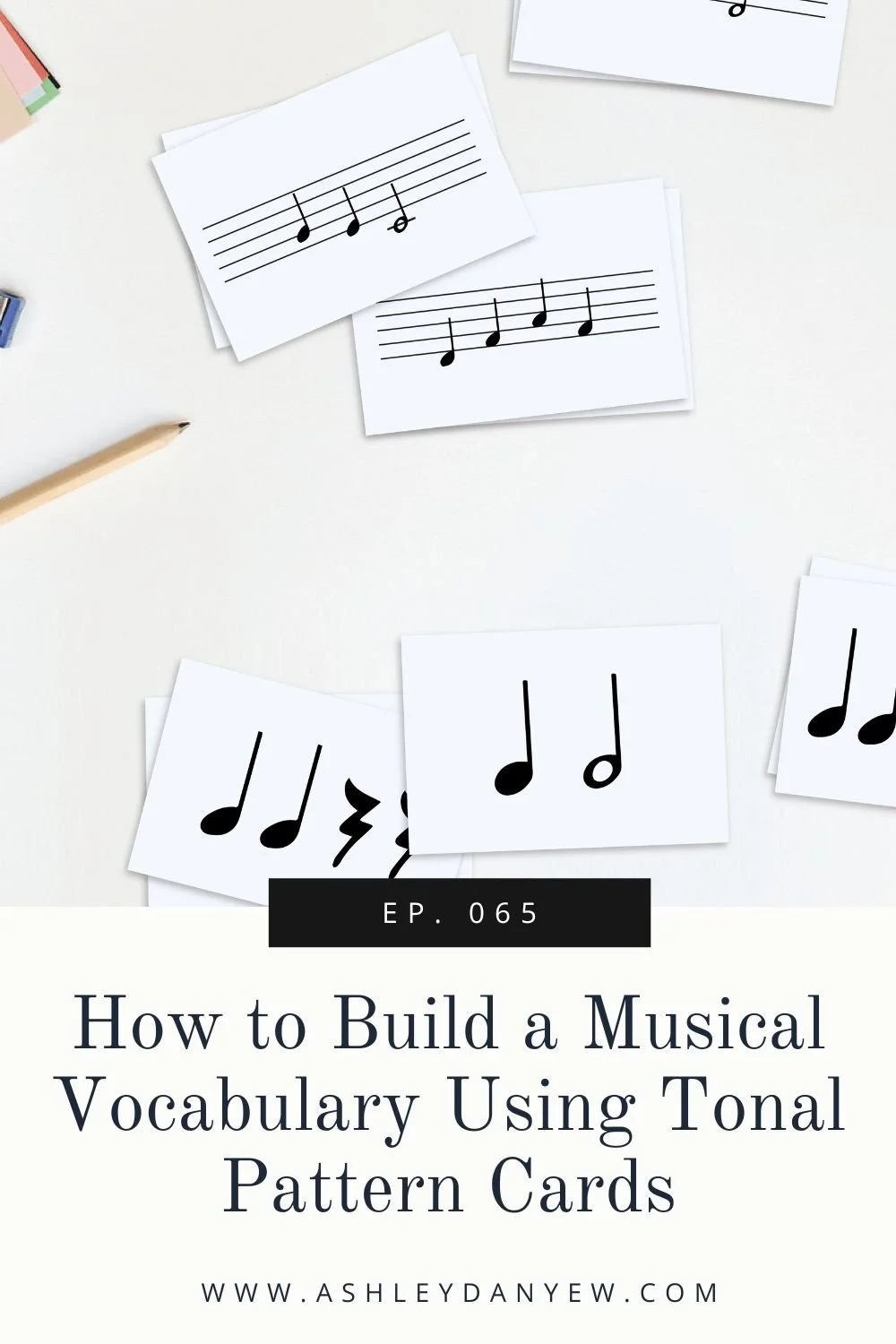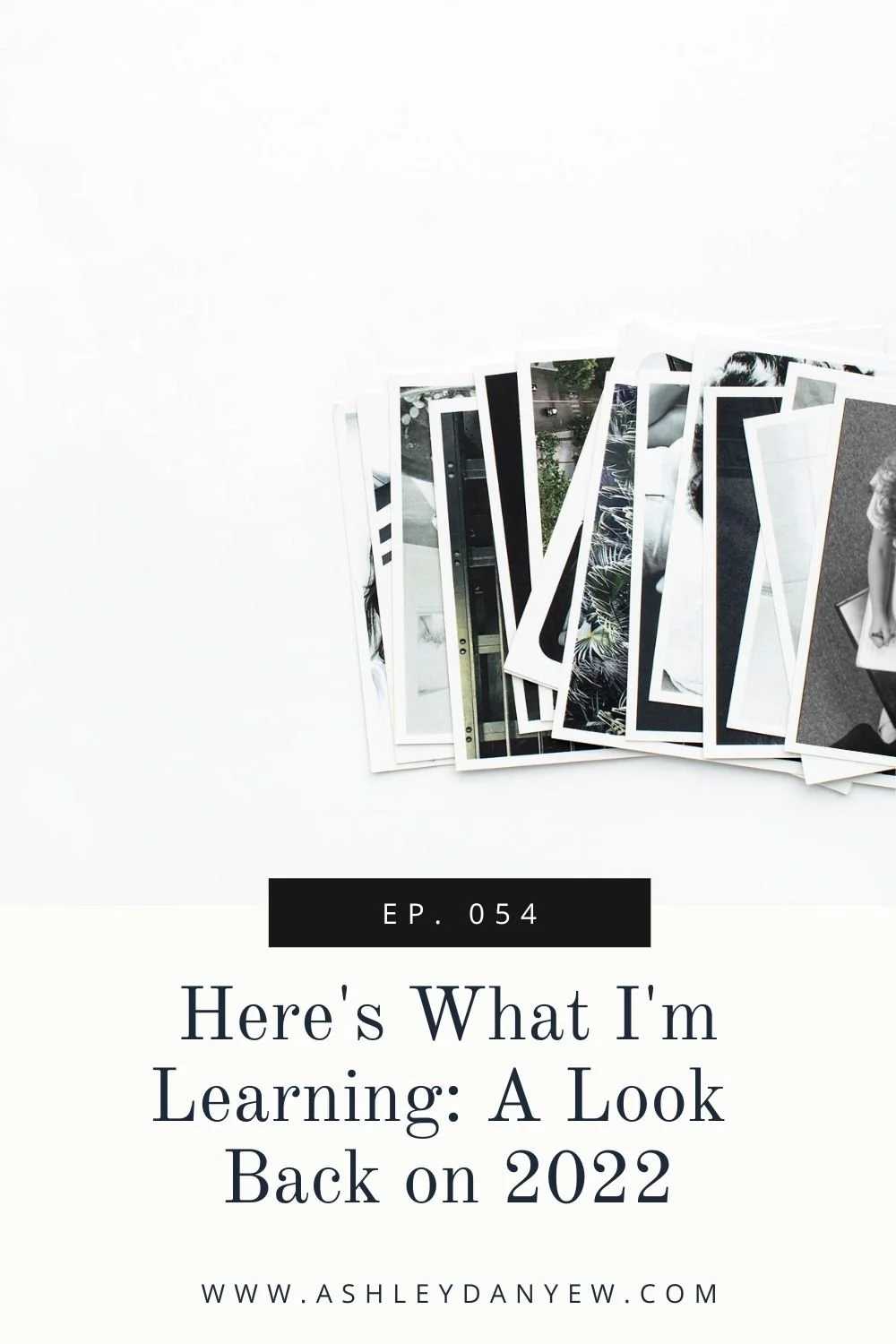Resources Mentioned
*Disclosure: some of the links in this episode are affiliate links, which means if you decide to purchase through any of them, I will earn a small commission. This helps support the podcast and allows me to continue creating free content. Thank you for your support!
Songs Without Words (Mendelssohn)
On the Spiritual in Art (1910) (Kandinsky)
Pictures At an Exhibition (Mussorgsky)
Clair de Lune (Debussy)
“October,” Lyric Preludes (Gillock)
Piano Mastery (1915) (Brower)
“Waltz for Miles,” Portraits in Jazz (Capers)
Prelude in C, Op. 11, No. 1 (Scriabin)
Daily Rituals: How Artists Work (Mason Currey)
Join the Musician & Co. Book Club (it’s free!)
On Developing a Daily Ritual: Insights From Mason Currey’s Book
Some of you may not know this about me, but I’m a musician and an artist.
I always loved art as a kid—from finger painting in my blue smock at my Little Tikes easel to coloring and tracing to the pastel class I took one summer, culminating in our work being displayed in a local bank. For a while, my answer to the question, “What do you want to be when you grow up?” was “An artist or illustrator.”
Music was always there, too—singing and playing the piano, learning letter names as I learned the alphabet, and later, accompanying, teaching, performing, and arranging.
At some point, I set art aside to focus on music. I still did craft projects from time to time and I’ve always loved interior design and styling, but I didn’t consider myself an artist. I didn’t draw or paint and I didn’t have any art supplies at home.
Then, during the pandemic, I found myself drawn to it again. In between online lessons, baking Jim Lahey’s No-Knead Bread, and reading through Mendelssohn’s Songs Without Words, I watched online painting tutorials. I practiced mixing colors in an art app on my iPad. I ordered supplies and started painting tiny acrylic landscapes from photos I’d taken in the Finger Lakes.
Now, five years later, I have a dedicated art table in my home office and a wall of tiny scenes and memories reflected in acrylic, watercolor, and pastels. I have a somewhat regular artistic practice alongside my music work. I’ve found that painting is a different facet of my creativity, a new form of artistic expression. And I have to say, it makes me come alive—to embrace my creativity as a whole, to invest in multiple aspects of my creative self at once.
And I’m not the only one.
From Felix Mendelssohn to Arnold Schoenberg, Joni Mitchell to Miles Davis, many musicians have found painting to be another form of artistic expression that complements and informs their musical side.
In this episode, I’m exploring what art is teaching me about music lately. Whether you consider yourself an artist or not, I hope this inspires you to think about all the different facets of your creative self—and how you can embrace them in your work.
No. 1 - Music is art and art is music.
“Color is the keyboard, the eyes are the harmonies, the soul is the piano with many strings. The artist is the hand that plays, touching one key or another, to cause vibrations in the soul.”
That’s a quote by Wassily Kandinsky, a pioneer in the abstract art movement of the late 19th and early 20th centuries.
Kandinsky had a rare neurological condition called synesthesia—when one sense is activated as a result of experiencing another. When Kandinsky heard sounds, he saw color, and when he saw color, he heard music—something he shared with composers Franz Liszt, Leonard Bernstein, Oliver Messiaen, Duke Ellington, and Alexander Scriabin.
Kandinsky often compared music and painting—the modern search for “rhythm, mathematical abstract construction, colour repetition, and manner of setting coulour into motion,” as he described in his 1910 book, On the Spiritual in Art. I love that thought of setting color into motion.
Perhaps drawing on his musical experience (he played the cello and the piano growing up), Kandinsky was also greatly influenced by the work of his friend, Arnold Schoenberg. He believed music was inherently abstract—a reflection of the artist’s soul—and this is what he strove to create in art.
That’s the first thing I’m learning—music is art and art is music. They’re linked together, a joint way of seeing the world through sight and sound. Music and art share a common language of expression—what we do with our hands (and our ears, intellect, and emotions) and how it can affect others.
Have you ever asked a student to draw a picture to accompany a piece they’re performing? It’s wonderful to see them express themselves through a different medium. I really think this enhances their connection to the piece and helps them express themselves more fully through the music.
There are so many parallels between art and music when you think about it. Consider the vocabulary we use in music study and teaching: Contrast and balance, structure and form, color and shading, tone and texture, layers and shape. Can you envision what this means in a musical context and what it looks like in visual art?
It makes me think about Mussorgsky’s Pictures at an Exhibition, a suite of piano pieces inspired by paintings by Viktor Hartmann, or Debussy’s “Clair de Lune” with its Monet-like impressionism. The shapes and sounds and scenery painted through musical color, harmony, and texture.
I talk about this with my students sometimes—describing the character of this phrase or that section, asking how a certain chord or progression makes them feel in the moment, what the composer was thinking when they named the piece. We talk about how to create foreground and background in pieces like William Gillock's "October” with its wind-swept melody and rich, colorful chords.
Do you think of music as art? Do you talk about it in this way?
No. 2 - Color is essential.
In the 1915 book, Piano Mastery, Harriette Brower interviewed master pianists and teachers sharing insights into their performance practice, musical interpretation, teaching methods, and philosophies about music.
One interview was with Arthur Hochman, a Russian-born American pianist.
“A pianist, like a painter, should have an infinitude of colors on his palette,” he began. “He should paint pictures at the keyboard, just as the artist depicts them upon the canvas.” He went on to describe how a pianist can color tone with action and emotion:
“Colors mean so much to me. . . .we can make as wonderful combinations with them as ever the painters do. To me dark red speaks of something tender, heart-searching, mysterious." Here Mr. Hochman illustrated his words at the piano with an expressive fragment full of deep feeling. "On the other hand, the shades of yellow express gaiety and brightness"; here the illustrations were all life and fire, in crisp, brilliant staccatos. . . .
"What I have just indicated at the keyboard," continued the artist, "gives a faint idea of what can be done with tone coloring, and why I feel that pianists who neglect this side of their art, or do not see this side of it, are missing just so much beauty.”
It makes me think of a keyboard workshop I participated in at a summer festival with Martin Katz. He was teaching about figured bass realization and how to simplify orchestral scores. Often, as accompanists, we make decisions about what to leave out based on what’s feasible, but I remember him talking about the importance of color and timbre—thinking orchestrally about texture, tone, and articulation. “How can you create a pizzicato effect on the piano or create a string tremolo effect in the bass?” I remember him asking. It’s not always about leaving things out; sometimes, it’s about adding things in.
I was thinking about this recently while playing Valerie Capers’ piece, “Waltz for Miles.” I thought about how we can use technique, voicing, articulation, and balance to make the right-hand melody sound like a muted jazz trumpet, just like Miles Davis would play.
There’s so much potential for expression in music. And hearing color in sound is a big part of that.
Recently, I was teaching “Rainbow Colors” by Julie Knerr Hague from Piano Safari Level 2. There’s so much potential for rich, artistic interpretation in this piece. It’s a wonderful opportunity to invite students to really hear the color changes between C major and A minor, to explore phrase-shaping and tone, and to feel the shift from warm, bright colors to cool, soft ones.
To give another example, I was working with a college student last year on Scriabin’s Prelude in C, Op. 11, No. 1—a beautiful, late Romantic piece that feels a little like Chopin. The opening section features sweeping arpeggiated lines in contrary motion, written in quintuplets that transcend the structure of the cut-time meter. We talked a lot about how to develop musical texture with light, delicate layers, create long, painterly lines, and use the pedals to create a soft, muted effect.
Can you think of examples in your teaching when you’ve compared making music to painting?
No. 3 - There will always be a messy middle.
I love reading about other people’s creative processes: How they structure their time, the routines and rituals that shape their days, the influences that inform their work, and the details of their artistic process. Where do they start? How long does it take?
When I sit down to paint, I start with a sketch—a rough approximation of the scene to help me get a sense of the whole work. I explore big sections and shapes, texture, contrast, and scale.
Then, I block in color. I fill in the big shapes with light and dark values, creating contrast and establishing foreground, middle ground, and background.
Next, I add a layer of detail—perhaps clouds in the sky or shadows on the mountains, variation in the leaves on the trees, or a reflection on the water. I alternate between lights and darks, highlights and shadows, adding texture, striving for balance, and experimenting with different techniques and brushstrokes to achieve my desired effect.
In music, we have a similar process, right? We start with a sense of the whole—the big sections, the scope, melody and accompaniment, texture and musical contrasts.
Then, we block in basic shapes—harmonies, chord inversions, melodic phrases. We explore light and dark, musical contrast, and establish a hierarchy of melody and accompaniment.
Next, we add in some of the details—phrase-shaping or dynamic expression, tempo variations, or color changes. We create musical texture, strive for balance, and experiment with different techniques and gestures.
It sounds fairly straightforward, right? But there’s one thing I didn’t mention that’s true for both art forms: There’s always a messy middle.
I’ve found that artists talk about this a lot. Somewhere in between blocking in color and layers of detail, there’s an ugly phase to every painting. That point where you consider starting over, or abandoning it completely. The colors are too saturated or too washed out, the shapes are not to scale, the texture is clunky and undefined, the strokes are too heavy or too similar.
Even master painters will tell you that every painting goes through this stage. It’s not something that improves with experience or knowledge; learning how to find your way through it is an essential part of the creative process.
Writers talk about it when working out character development in a novel. Sculptors talk about it when working with raw, misshapen material.
In music, it’s that point when the notes and rhythms feel forced, the phrase shapes are inelegant and disproportionate, the texture is thick and unbalanced, the gestures are unrefined. That point when you begin to question your abilities or wonder if you chose a piece that was a little too challenging for your student.
But I find we’re less likely to talk about the messy middle as musicians.
We don’t talk about how it’s a creative challenge or something every piece must go through. We’re less likely to accept it as part of the process. Instead, we get in our heads about it. We question our decisions, our capabilities, our motivations. We ask why it’s happening.
But there’s something to be said for embracing the whole process, start to finish. For anticipating the messy middle and trusting yourself to keep working through it. For not letting it call into question your abilities, commitment, or what you have to offer.
Maybe this is something we can learn from artists and writers.
By the way, if you’re looking for a book to add to your summer reading list, I highly recommend Daily Rituals: How Artists Work by Mason Currey. We read this last year in the Musician & Co. Book Club. I was so inspired to learn about the daily routines and rituals of people like Andy Warhol, Franz Liszt, George Gershwin, Erik Satie, Benjamin Franklin, Igor Stravinsky, and so many others—over 150 profiles in all, spanning novelists to poets, composers to playwrights, painters to philosophers, scientists to mathematicians.
Here’s a link to my book review post/podcast episode.
Conclusion
Thanks for listening to me ramble about art today.
I truly believe that being an artist makes me a better musician and teacher. It offers me a different perspective, a different way of thinking about the learning process, and the ways we create art. It gives me a new vocabulary—new ways to describe concepts, talk about expression, and make the intangible aspects of music more tangible.
I hope this gives you permission to embrace all the different facets of your creativity—whether that’s painting or writing, cooking or gardening, photography or weaving. You deserve to be your whole creative self, to do the things that make you come alive. It all counts, it all matters, it all works together. It’s all a reflection of you and that is so, so valuable.
I’d love to hear from you:
I’d love to hear what you thought of today’s episode and if it resonated with you. Send me an email—ashley@ashleydanyew.com or message me on Instagram. I always love hearing from you!




